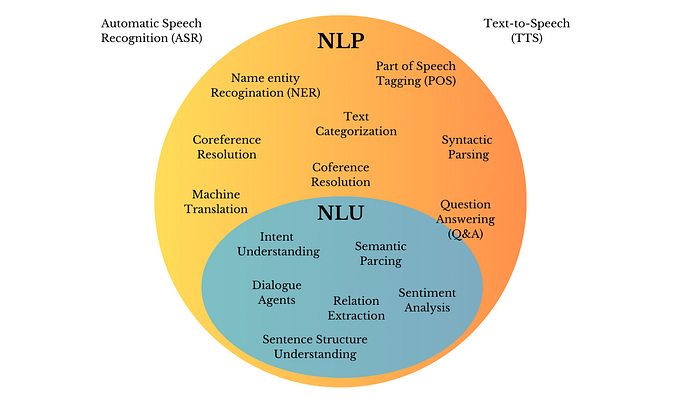In the ever-evolving landscape of artificial intelligence and natural language processing, ChatGPT stands out as a groundbreaking achievement. Developed by OpenAI, ChatGPT is a language model based on the GPT-3.5 architecture, designed to understand and generate human-like text. As we delve into the fascinating world of ChatGPT, it’s essential to familiarize ourselves with the key terms that define its capabilities, functionality, and impact. This blog aims to serve as a comprehensive guide to the top 50 ChatGPT terms, shedding light on the intricacies of this revolutionary technology.

- GPT (Generative Pre-trained Transformer): GPT serves as the foundation for ChatGPT, representing a transformer-based model that has been pre-trained on vast amounts of text data. It excels at generating coherent and contextually relevant text based on the input it receives.
- OpenAI: The organization behind ChatGPT, OpenAI is a research institute committed to advancing artificial intelligence in a safe and beneficial manner. Their work on GPT models, including ChatGPT, has garnered widespread attention and acclaim.
- ChatGPT: A specific implementation of the GPT model tailored for conversational purposes. ChatGPT is capable of understanding and generating human-like responses in a dialogue, making it a powerful tool for various applications.
- Fine-tuning: The process of training a pre-trained model, like ChatGPT, on a specific dataset to adapt its behavior to a particular task or domain. Fine-tuning is crucial for optimizing the model’s performance in specialized applications.
- Prompt: The input provided to ChatGPT in the form of a text prompt or question. The model generates responses based on the prompt it receives, showcasing its ability to understand context and provide relevant information.
- Token: In the context of language models, a token represents a unit of text, which can range from a single character to an entire word. Understanding tokenization is essential for working with and interpreting the output of ChatGPT.
- Context Window: The portion of the input text that the model considers when generating a response. GPT models, including ChatGPT, have a finite context window, limiting their ability to recall information from the entire input sequence.
- Hyperparameter: Parameters that are set before the training process and control the architecture and behavior of the model. Understanding hyperparameters is crucial for optimizing the performance of ChatGPT in different scenarios.
- Inference: The process of using a trained model, like ChatGPT, to generate predictions or responses based on new input data. In the context of conversational AI, inference refers to the generation of responses during a dialogue.
- Response Length Bias: A phenomenon where the model tends to produce responses of a certain length, which may be influenced by the training data. Mitigating response length bias is an ongoing challenge in improving the performance of language models.
- Overfitting: A situation where a model performs well on the training data but fails to generalize effectively to new, unseen data. Balancing the fine-tuning process is crucial to prevent overfitting in ChatGPT.
- Multi-turn Conversations: Dialogues involving multiple exchanges between the user and the model. ChatGPT’s ability to handle multi-turn conversations is a key aspect of its effectiveness in real-world applications, such as chatbots.
- Zero-shot Learning: A capability of ChatGPT to provide relevant responses to prompts or questions even when it has not been explicitly fine-tuned for a specific task. Zero-shot learning showcases the model’s generalization ability.
- Few-shot Learning: Similar to zero-shot learning, but the model is provided with a few examples (shots) related to the task at hand. Few-shot learning enables ChatGPT to adapt quickly to specific tasks with minimal examples.
- Prompt Engineering: The art of crafting effective prompts to elicit desired responses from ChatGPT. Experimenting with prompt engineering is essential for obtaining optimal results in various applications.
- Transfer Learning: A machine learning paradigm where a model trained on one task is leveraged for improved performance on a different, but related, task. Transfer learning plays a crucial role in the efficiency of ChatGPT.
- Top-k Sampling: A text generation technique where the model selects from the top k most likely next tokens at each step. Top-k sampling introduces a level of randomness, resulting in diverse and creative responses from ChatGPT.
- Top-p (Nucleus) Sampling: A variation of sampling where the model selects from the smallest set of tokens whose cumulative probability exceeds a predefined threshold p. Top-p sampling balances randomness and control in text generation.
- Attention Mechanism: A critical component of the transformer architecture, the attention mechanism allows the model to focus on different parts of the input sequence when generating output. Understanding attention is key to interpreting the inner workings of ChatGPT.
- Tokenization: The process of breaking down a piece of text into individual tokens. Tokenization is a fundamental step in preparing input data for language models like ChatGPT.
- In-domain Data: Data that is specific to the domain or task for which ChatGPT is being fine-tuned. Training on in-domain data enhances the model’s performance in specialized applications.
- Out-of-domain Data: Data that is not directly related to the domain or task at hand. While in-domain data is essential for fine-tuning, exposure to out-of-domain data helps improve the model’s generalization capabilities.
- Beam Search: A search algorithm used in text generation that explores multiple possible sequences of tokens and selects the most likely sequence based on a scoring mechanism. Beam search is employed to improve the coherence and quality of responses from ChatGPT.
- Latent Space: A conceptual space where the representations of different inputs are clustered based on similarity. The latent space of ChatGPT captures the underlying patterns and relationships in the data.
- Model Output Temperature: A hyperparameter that controls the randomness of the generated text. Higher temperatures result in more diverse and creative outputs, while lower temperatures produce more focused and deterministic responses.
- Conversational Depth: A measure of how deeply ChatGPT can engage in meaningful and contextually relevant conversations. Improving conversational depth is a key area of research to enhance the user experience in dialogue-based applications.
- Transfer Task: A specific task or domain for which ChatGPT is fine-tuned. Choosing the right transfer task is crucial for achieving optimal performance in real-world applications.
- Catastrophic Forgetting: A challenge in fine-tuning where the model forgets previously learned information when adapting to new data. Mitigating catastrophic forgetting is essential for maintaining the knowledge gained during pre-training.
- Bias in Language Models: The presence of biases in the training data that can be reflected in the responses generated by ChatGPT. Addressing bias is a critical aspect of ethical AI development.
- Explainability: The degree to which the inner workings of ChatGPT can be understood and interpreted. Enhancing explainability is essential for building trust in AI systems, especially in sensitive applications.
- Data Augmentation: The technique of artificially increasing the diversity of the training data by applying transformations or introducing variations. Data augmentation helps improve the robustness and generalization of ChatGPT.
- Prompt Context: The information conveyed by the prompt and the context window, influencing the generation of responses by ChatGPT. Understanding how prompt context affects the model’s behavior is crucial for obtaining desired outputs.
- Prompt Expansion: The practice of providing additional context or information in the prompt to guide ChatGPT’s responses. Prompt expansion is a strategy employed to enhance the model’s understanding of user input.
- Domain Adaptation: The process of fine-tuning ChatGPT on data from a specific domain to improve its performance in that domain. Domain adaptation is essential for tailoring the model to the requirements of different applications.
- Ethical AI: The practice of developing and deploying AI systems, including ChatGPT, in a manner that prioritizes fairness, transparency, and accountability. Ethical considerations are integral to responsible AI development.
- Human-in-the-Loop: An approach where human intervention is incorporated into the AI system, allowing users or operators to guide and validate the model’s outputs. Human-in-the-loop systems are designed to enhance the reliability of ChatGPT.
- Conversational User Interface (CUI): The interface through which users interact with ChatGPT in a conversational manner. Designing an effective CUI is crucial for creating seamless and user-friendly chatbot experiences.
- Curriculum Learning: A training strategy where the model is exposed to progressively more complex examples over time. Curriculum learning helps ChatGPT learn hierarchical structures and patterns in the data.
- Adversarial Training: A technique where the model is exposed to adversarial examples during training to improve its robustness. Adversarial training helps ChatGPT withstand variations and unexpected inputs.
- Temporal Awareness: The ability of ChatGPT to understand and respond to temporal aspects in a conversation, such as past references and future implications. Enhancing temporal awareness is crucial for more coherent and contextually relevant dialogue.
- Model Output Filter: A mechanism to filter or modify the model’s output based on predefined criteria. Implementing output filters helps control the content and tone of the responses generated by ChatGPT.
- User Intent Recognition: The capability of ChatGPT to discern the underlying intent or purpose behind user prompts. Accurate user intent recognition is vital for providing relevant and meaningful responses.
- Saliency: The degree to which a particular part of the input sequence influences the model’s output. Understanding saliency helps interpret the model’s decision-making process in response generation.
- User Satisfaction Metrics: Metrics used to assess the quality and user satisfaction with the responses generated by ChatGPT. Evaluating user satisfaction is crucial for iterative improvements in model performance.
- Prompt Randomization: Introducing randomness in the choice or structure of prompts during training to enhance the model’s adaptability. Prompt randomization helps ChatGPT handle a wide range of user inputs.
- Neural Network Architecture: The underlying structure and configuration of the neural network used in ChatGPT. The neural network architecture plays a pivotal role in determining the model’s capacity to learn and generalize.
- Memory Augmented Networks: Architectures that incorporate external memory components to enhance the model’s ability to store and retrieve information. Memory augmented networks are designed to address limitations in handling long-term dependencies.
- Dialogue Policy: The set of rules or strategies that govern ChatGPT’s behavior during a conversation. Designing an effective dialogue policy is essential for achieving natural and contextually relevant interactions.
- Multi-modal Input: The integration of different types of input, such as text, images, or audio, to enhance the richness of interactions with ChatGPT. Exploring multi-modal input expands the model’s capabilities in understanding diverse user inputs.
- Adaptive Learning Rate: A technique where the learning rate during training is dynamically adjusted based on the model’s performance. Adaptive learning rates help optimize the training process for ChatGPT.
Conclusion
As we conclude our exploration of the top 50 ChatGPT terms, it becomes evident that the landscape of conversational AI is vast and dynamic. From the foundational concepts of GPT and tokenization to the intricate details of bias mitigation and ethical considerations, ChatGPT represents a culmination of years of research and innovation. The continuous evolution of these terms and the underlying technology reaffirms the potential of ChatGPT to reshape the way we interact with AI systems. As researchers, ChatGPT developers, and users continue to engage with ChatGPT, the lexicon surrounding this transformative technology will undoubtedly expand, paving the way for new possibilities and applications in the realm of natural language processing.






